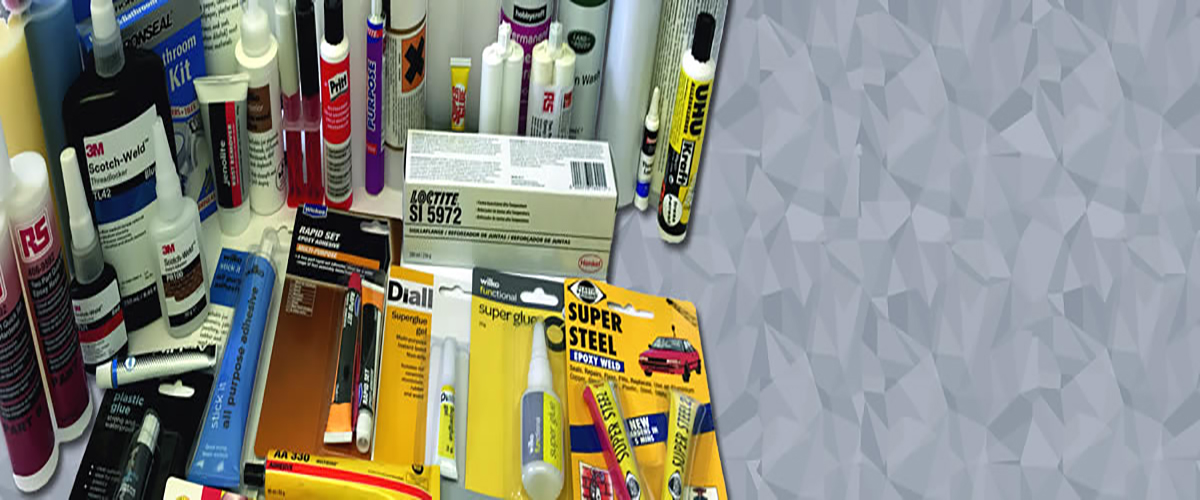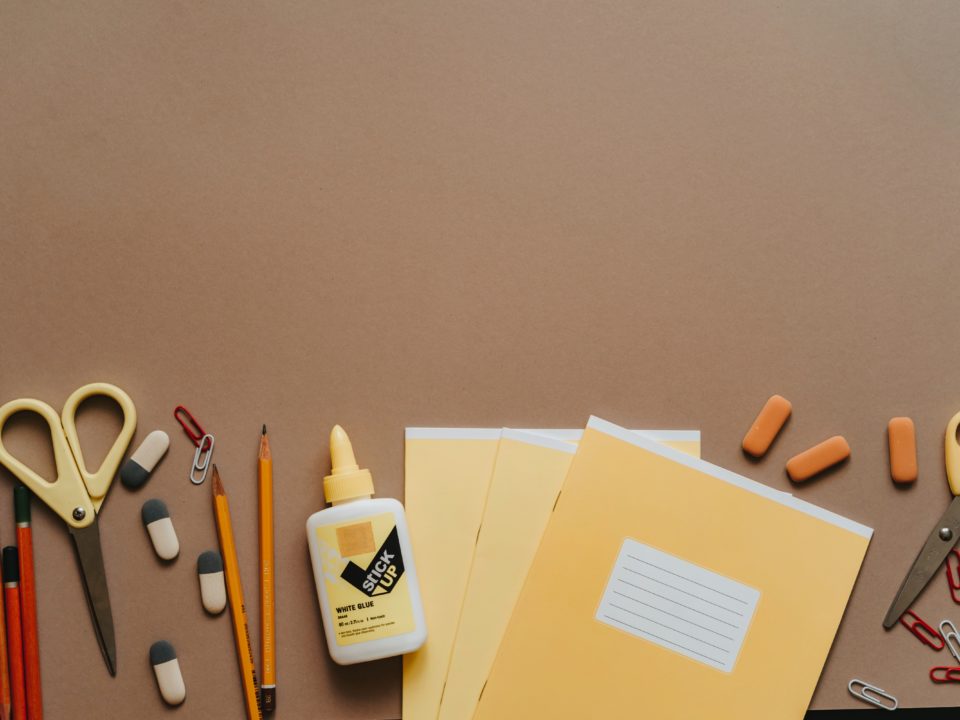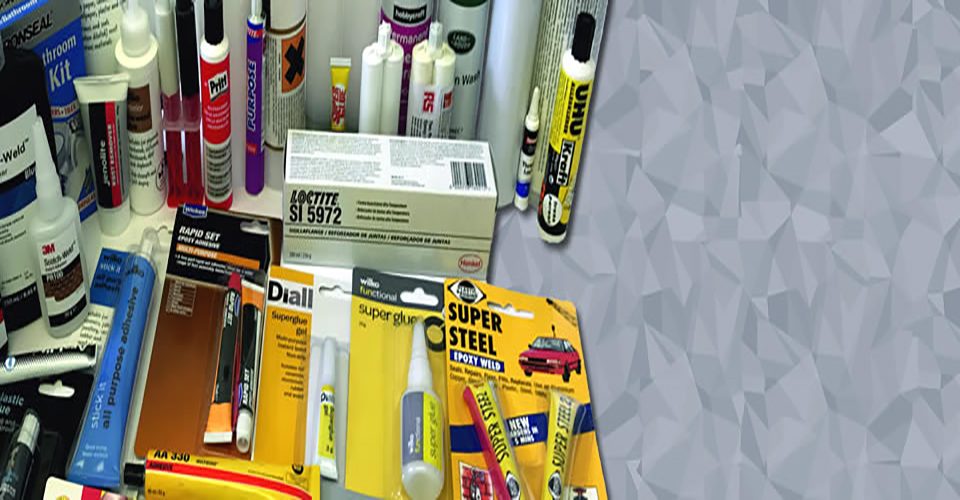Everything you need to know about glue
Glue, it is that super sticky, ever useful bonding agent that helps us join objects together and repair our broken belongings. When thinking about glue, it is fair to say that superglue or craft glue most likely springs to mind, after all, these are the 2 most popular and most commonly used types of glue on the market.
YOU’LL NEVER GUESS WHAT THE STICKIEST THINGS IN THE WORLD ARE!
It may seem like quite a simple product, but in fact, glue has a long and rich history that goes back as far as 10,000 years ago. Of course, back then it was not what we would really call glue nowadays, but it was glue none the less. The definition of glue is ‘an adhesive substance used for sticking objects or materials together.’ This means that in theory, any substance that joins one or more surfaces together in a semi-permanent to permanent bond is classed as glue.
For the purpose of this article, we are going to mainly focus on what is now commonly accepted as glue, although we will touch upon the plethora of other types that have helped man build and develop the world around them. Read on to discover absolutely everything that you will ever need to know about glue and understand just how it has helped shape the world we live in.
HISTORY OF GLUE
Glue has been found to date back to the time of the ancient Neolithic era. Dating back to around 8000BC, evidence has been unearthed that shows that the people of the time made use of resin from birch trees to attach the heads of spears and axes to the handles. Resin is a naturally occurring sticky substance that is produced by many trees when they suffer damage to the outer layers of the bark.
In 5000BC the time of Babylonia, the Babylonian people created concoctions of animal’s blood, proteins, plant resins, and asphalt was used to build the homes, temples and structures of the land. In fact, animal parts have been used up to this day to create glue. Many of us will have heard of the horse glue factories which have all but now vanished.
After the Babylonian period came the era of the Ancient Egyptians. The Egyptians to building structures to a whole new level and many of their major landmarks are still standing today as a reminder of the ingenuity and advancement of the people of the time. It was in ancient Egypt that the very first professional title was given to someone who manufactured glue, and this was the title of Kellopsos. Kellopsos directly translates as ‘adhesive maker’ and allows us to know that the art of glue making must have been around for quite some time before to allow such a profession to evolve and exist.
By the time that the Roman and Greek period took hold, glue was well and truly ingrained as part and path of life. It had by this time become a fine-tuned process, and the discovery of the roman oak box confirms this. In 1886, an oak box was unearthed that had 5 gold coins glued to the top of it. The glue that was used consisted of a chalk and protein mix. The glue created was so strong that 4 of the 5 coins glued to the box over 2000 years ago still remain fixed in place.Perhaps this is the earliest known form of super glue.
Glue Packaging
The Aztecs of South America made use of blood as a building glue. This may appear like an odd choice to make a construction glue from, but it is, in fact, the albumin in the blood which holds the bonding power. Animal blood was mixed into a cement-like base and created a sticky cement the dried hard. Much of the work of the Aztecs still stands strong today and allows us an insight into the rich history of their developed population.
In more modern times, natural rubber made an impact on the glue industry and in 1841; the vulcanization of rubber gave birth to the era of synthetic glues. Vulcanization is the chemical process of adding a component such as sulphur to create a more durable substance. The rest, as they say, is history, and the wonderful world of glue has transformed into a multi-billion pound industry that shows no sign of slowing down.
TYPES OF GLUE
Glue doesn’t come as one set standard. In fact, there are many different variations of it ranging from organic glues to man-made synthetics. Each glue will serve a purpose and prove to be popular for different niches. One of the most tailor-made examples of a glue is that of an organic and vegan adhesive. As each type of glue is suited for different purposes, this section is going to run through some of the more common types you can purchase and what they are best suited for.
Craft Glue:
Craft glue is typically made from PVA and is what you will find in the craft draw at home, school and work. The glue tends to be an opaque milky white colour and has a distinctive odour of fish. While it may smell of fish, there isn’t actually any fish in it. The glue is applied to porous materials such as paper, cardboard, and tissue and dries clear. The bond is not a super strong one and it does break down over time, but it proves to be perfect for arts and crafts.
Super Glue:
We have all experience super glue at some point or another, and it has usually resulted in us desperately trying to free our fingers from whatever we were trying to glue. Super glue was not created during the wartime as popular myths dictate. It was used as a crude way to seal open wounds during the Vietnam War, but there are no real stories of it being used during world war 1 or 2. Super glue was an adhesive created by an error during trials to create a clear plastic gun lens.
Wood Glue:
As the name suggests, wood glue is primarily used for bonding wood. The consistency and bonding power of wood glue is designed to be strong on porous surfaces. As wood easily degrades from elements in the environment and also suffers from insect attack, many wood types of glue contain anti-insect and waterproofing properties. Wood glue is used in the manufacture of furniture.
Metal Glue:
Metal glue is designed to create a long-lasting and strong bond between metallic surfaces. If you try to super glue a coin to a metal plate you will discover that it doesn’t want to stick. Metal glues create a strong bond between the surfaces and allow adhesion. It is standard practice to rub the surface of metals with sandpaper prior to use to remove the smooth sides and create more surface area for bonding.
Wallpaper Paste:
Wallpaper paste is an adhesive that is mixed with water to create a sticky glue used for hanging wallpaper. This is another glue that suffers from a fishy odour, however, its creation has allowed us to decorate the walls of our homes and places of work in styles that we want. Wallpaper paste is normally applied to the wall and left for 10 minutes. It is then applied to the wallpaper and left for the same amount of time before applying the paper to the wall. As the water evaporates the adhesive bond cures and the paper is permanently fixed in place.
STRONGEST GLUE IN THE WORLD
You most likely think of super glue when you think of the strongest glue in the world, but you would be wrong. Super glue dries hard and offers little to no flexibility. This means that as soon as any stretching, bending, or morphing of the glue occurs it becomes brittle and breaks. While its bonding speed is fast and the initial result is strong, it does not offer enough flexibility to be considered as the strongest.
Superglue
Next to pop into your mind may be 2-part epoxy. 2-part epoxies provide a strong bond that is flexible, heat resistant, cold resistant, waterproof, and chemical resistant. While it is true that 2-part epoxy is superior in strength to super glue, it needs plenty of surface preparation performed before being applied for best curing and hold.
Perhaps you thought of a glue such as Gorilla glue. Gorilla glue is much like a 2 part epoxy. It too is resistant to heat, cold, water, chemicals, and offers great flexibility. It also cures much faster than 2 part epoxy. However, its strength when placed under opposing pressure is not as strong as super glue.
All in all, the strength of the glue you are using all depends on its intended purpose. While one surface may benefit from super glue, another may require epoxy. To get the strongest bond possible for any project or task you may be performing, first consider its location, environmental condition, surface conditions, and length of required durability.
POPULARITY OF GLUE
Over the past few years, the popularity of PVA Elmer’s glue has increased by more than 96% and there is a reason behind its popularity. The resurgence of the ever so popular ‘slime’ that comes in pots and keeps children entertained for hour after hour is now a popular homemade craft.
The main component of the slime is Elmer’s glue, which is what is used in homes and schools across the country for arts and crafts. When it comes to arts and crafts, another popular glue reigns supreme and that is the mighty Pritt stick.
The Pritt stick which was released in 1969, has sold over 1 billion units in more than 120 countries. The original Pritt Stick was made with crafts in mind, but in 2003 Pritt released its very first multi-purpose stick glue ‘PowerPritt’. 2017 saw the release of the Pritt power roller.
The largest consumer of glue in the world is China. China consumes over $1.2 billion dollars of glue annually. This is down to Chinas significant manufacturing of goods which are exported globally. This is closely followed by India, the USA, and the UK.
SECRET USES OF GLUE
Glue can do much more than simply stick things together; it can also be used to help you with everyday tasks from medical uses to cosmetic purposes. So what are the 8 best secret glue hacks that you can use with the non-toxic PVA craft glue?
• Remove a splinter from your skin: You can quickly and easily remove a splinter from your skin without the need of painful squeezing and retrieval with a needle or tweezers. Simply paint on a layer of PVA glue over the splinter entrance point and allow it to dry. As the glue dries it causes suction over the entry hole and pulls the splinter into the glue, the splinter then bonds with the glue and when you peel away the glue the splinter will be removed.
• Seal the open wounds on a pruned plant: Pruning plants can leave them susceptible to bacterial and micro-organism infections which can lead to their untimely death. When pruning branches and stems that leave an open wound, coat the open area with a layer of PVA glue to create an impenetrable barrier for your plant.
• Tidy up shoelaces: Frayed shoelaces not only look ugly but also lead to the deterioration of the lace itself. If your laces are fraying, simply twist the ends with your fingers and dip them in some PVA and allow it to dry.
• Fill holes in walls: If you have no filler for holes and crack on your walls and want to paint them then you can use PVA glue to fill them. Use a paintbrush to paint over cracks with a thin layer of glue, or a pipette to fill holes with small droplets of glue. For larger holes, you can mix tissue fibres with glue to create a paste to fill the holes quickly and easily.
• Remove nail polish: Mix 1 part glue with 2 parts nail polish and place into an airtight container. Shake the mixture to ensure it is well mixed. When you want to remove your nail polish simply paint a layer onto each nail and allow it to dry. When it has dried you can then peel it off and it removes the polish in one swift stroke.
• Tighten screw holes: If you are having trouble with screws not fitting the screw holes properly simply pop in a drop or 2 of glue and then leave it for around 20 minutes. When the glue has set you can then screw the screw into the hole and it will fit perfectly.
• Create special paint effects: If you want to create a special crackled effect on walls or painted surfaces simply paint on a base coat of paint and allow it to dry. When it has dried apply a layer of PVA glue and wait for it to become tacky. When the glue is tacky, apply the top layer of paint and wait for the crackling effect to appear. This works best if you use a contrasting base and top coat colour.
• Make slime: A simple mix of PVA glue, liquid starch (such as laundry starch) and some food colour will create an inexpensive and plentiful supply of slime that your kids and you will enjoy for hours on end.
*Note: these tips above are for use with PVA glue only. Do not attempt to recreate these with any other type of glue as harmful chemical reactions could occur leading to injury.
IS THE END OF GLUE UPON US?
In a word, no. Glue is one of the few products which appears to never go out of fashion. Until a time comes that something is created that will replace glue in its entirety, it is sticking around for the foreseeable future.
Of course, as is expected with everything man makes and creates, its evolution into stronger and more flexible solutions will arise. A good example of how glue has jumped across different niches is super glue. Super glue is not only used for repairing broken china nowadays but has also carved itself large roles in the repairing and sealing of wounds.
Plastic Welder
Medical grade super glue effectively bonds and seals large cuts without the need of stitches and usually has added healing ingredients added to aide with the healing process. Forr scrapes and burns, a spray-on adhesive skin can provide a barrier that prevents infection from developing.
It may be hard to imagine a world without glue. It has helped shape, mould, and bond the very homes we live in, the everyday items we use every day, and even the foods that we eat. Without glue, we would be living in a very different world and would most likely still be living a more basic existence.
Adhesives make our lives easier and help us build, create and repair both quickly and easily while being cost effective and easy to purchase.



